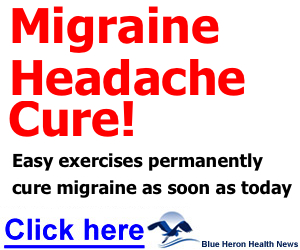A headache, often called sinus headaches, can result from an infection in the paranasal sinuses. Sinus headaches can also be a result of sinusitis which is an inflammation of the nasal sinuses that may or may not be a result of an infection from bacteria, fungus, virus or an allergic response. The pressure within the paranasal sinuses is the cause of the headache.
The sinuses are air filled cavities or spaces located behind the eyes and over the forehead, behind the cheekbones and behind the bridge of the nose. These sinuses will produce a thin mucus that drains consistently through the channels of the nose. When a particular sinus becomes inflamed it will prevent the outflow of mucus and cause the pain similar to that of the headache. The blockage of this channel can be a result of an allergic reaction, a cold, a tumor or an infection.
People who suffer from sinus headaches experience deep and constant pain over the cheekbones, forehead or bridge of the nose which will intensify with any sudden head movements or straining. The pain is often accompanied by other symptoms such as increased nasal discharge, feeling of fullness in the ears, fever or a feeling of facial swelling. People who suffer from a sinus infection that accompanies a sinus headache will often experience vertigo or the perception that the room is spinning.
Other symptoms include a yellow-green or blood tinged nasal drainage, sore throat from post nasal drip, cough and fatigue.
Whatever the headache is attributed to can usually only be determined by your primary care physician. While you may have frequent sinus infections or allergic reactions, it is always best to consult with your doctor to rule out any other reason that the fluid has been blocked – such as a tumor.
If you have an infection you will most likely also have a fever. Using an x-ray, MRI or CT scan and physical examination the doctor will determine the cause of the blockage, which will indicate the most appropriate method of treatment that will have the best chance of successful outcome.
Treatment will be directed towards relief of the symptoms as well is treating the underlying cause. For an infection the physician may include antibiotics as well is a short period of antihistamines or decongestants in order to help decrease the fluid buildup in the sinus cavities. However, because of the size (much smaller) of the sinus cavities in children versus adults antihistamines or decongestants should not be used to help treat a sinus infection. This is because these medications may not drive the fluid out completely but rather cause it to become thicker and increase the likelihood that the thick drainage will become a field for infection.
If you have a true sinus headache and take decongestants you can actually make the headache worse so it is very important to consult with your primary care physician before taking anything stronger than Tylenol or ibuprofen in order to treat the discomfort.
Physicians may also use pain relievers and vasoconstrictors in order to decrease the amount of pain caused by the inflammation in the nasal and paranasal sinuses. If after using pain relievers you continue to have pain the doctor may prescribe corticosteroids to decrease the inflammation and when an allergy is the trigger for a sinus headache then preventative therapy for the allergies is often prescribed.
One misconception about sinus headaches is that they are caused by allergies when in fact the allergies are a trigger. In other words, the allergic reaction causes a build up of fluid in the sinuses which then leads to the headache pain. When being treated, the conditions – the allergic reactions and the fluid build up and thickening – must be treated separately.
There are several things that people can do at home to help prevent a sinus headache, especially during allergy season, or to alleviate the pain of a current headache. The first is to breathe moist air in a humidified dry environment with a steam or cool mist humidifier. If these are not available you can even breathe the steam from a basin of hot water or take a long hot shower.
Some people find that a hot compress across the sinuses for three minutes followed by a cold compress for 30 seconds will give relief. You can repeat the procedure three times in a row and do them two to six times per day to get the best relief possible from the congestion and build.
Another over-the-counter treatment is the use of nasal irrigation. Many people have found is a decrease in their allergy reactions when they removed the irritants such as pollen, dust particles, pollutants and bacteria. This reduces the inflammation of the mucous membrane and helps the body to fight infections on its own. Using nasal irrigation also helps to shrink the sinus membrane and increase the drainage. There are several different over-the-counter rinsed products which are available and you can also make your own nasal rinse or irrigation solution at home.
By combining a trip to the primary care physician for an accurate diagnosis with preventative at home treatments most people are able to keep the pain of their sinus infections and sinus headaches to a minimum. But before self-medicating and self treating it is highly important that you confirm the diagnosis with your primary care physician and do not overlook the underlying reason for the blockage in drainage of the sinus cavities.
RESOURCES
Expert Review of Neurotherapeutics: Sinus Headaches: Avoiding Over-and Mis-Diagnosis
Cedars-Sinai: http://www.cedars-sinai.edu/
Johns Hopkins Medicine: Sinus Headache
American Headache Society: Migraine or Sinus Headache?
University of Maryland Medical Center: Sinus Headache
MayoClinic: Sinus Headache

